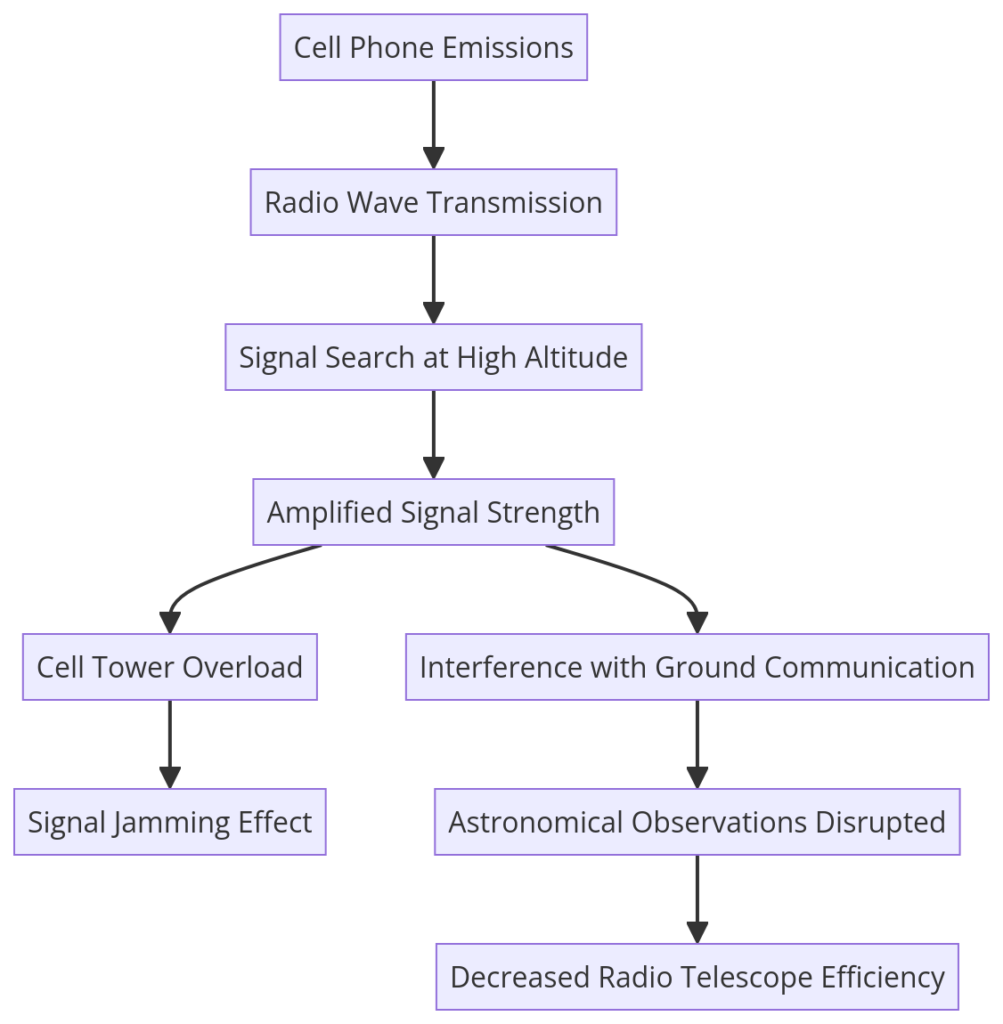Airplane Mode: Why it Matters?

In the digital age, smartphones are essential for communication, navigation, and entertainment. But have you ever wondered why airlines request passengers to activate airplane mode during flights? This request is more than a precaution for aircraft safety; it plays a significant role in maintaining the functionality of communication networks and preventing disruptive interference. Let’s dive into the science behind airplane mode and its importance.
Understanding Electromagnetic Spectrum and Radio Waves
The electromagnetic spectrum encompasses a range of waves, including radio waves, microwaves, infrared, visible light, ultraviolet, X-rays, and gamma rays. Radio waves, utilized by cell phones for communication, are positioned at the lower frequency range of this spectrum. These waves vary in wavelength and frequency, measured in Hertz (Hz), with cell phone transmissions typically falling between 800 MHz and 2.5 GHz.
Each cell phone emits electromagnetic signals in the form of radio waves that travel through the air, interacting with cell towers and network infrastructure. These waves propagate as electromagnetic fields, carrying voice, data, or other digital information encoded through modulation techniques such as Frequency Modulation (FM) or Amplitude Modulation (AM).
How Cellular Networks Function
Cellular networks operate through a series of interconnected towers that handle different frequencies to manage data transmission. When a phone call is initiated, the device sends a signal to the nearest cell tower, which then routes the communication through a broader network, ultimately reaching the intended recipient. Each connection requires a specific frequency to avoid interference with other devices. The process involves:
Uplink Transmission: The phone sends data to the tower using radio waves at one frequency.
Downlink Transmission: The tower sends data back to the phone at a different frequency.
These frequencies are segmented into channels or bands to optimize simultaneous data handling without overlap, employing advanced multiplexing techniques like Frequency-Division Multiple Access (FDMA) and Code-Division Multiple Access (CDMA).
Airplane Mode’s Role in Signal Management
Activating airplane mode on a device shuts down its radio frequency (RF) transmission capabilities, including cellular, Wi-Fi, and Bluetooth. This mode stops the device from sending or receiving electromagnetic signals, preserving network stability. The reasons for using airplane mode include:
Avoiding Airborne Interference: In-flight phones that continuously attempt to connect with ground cell towers emit high-amplitude signals. Due to their altitude, these signals have an extended line of sight to multiple towers, which can lead to overwhelming signal strength. This could disrupt the distribution of network resources and interfere with ground-level communications.
Network Tower Overload: Phones in the sky connect momentarily to different towers as the aircraft moves, causing excessive signal handoff and potential tower overload. This results in increased noise and reduced efficiency for ground-based connections.
The Physics Behind Signal Interference
Electromagnetic wave interference occurs when multiple waves overlap, potentially resulting in constructive (amplified) or destructive (attenuated) interference. When a phone aboard an aircraft emits strong radio signals, it can interfere with cell towers’ handling of other devices. This interference leads to:
Single Jamming: When multiple high-amplitude signals reach a tower simultaneously, the system struggles to distinguish and separate them effectively, creating a scenario similar to intentional jamming.
Frequency Congestion: The limited number of available frequencies means devices need to share spectrum resources. Airborne devices, which can reach multiple towers simultaneously, exacerbate this problem by injecting high-powered transmissions.
Impact on Astronomical Observations
Astronomers use radio telescopes to capture faint signals from deep space, which often range from 1 GHz to 50 GHz. These telescopes are highly sensitive to electromagnetic interference, and their ability to detect cosmic events can be hindered by terrestrial sources like cell phone transmissions. With the rise of 5G technology, which operates in frequencies overlapping those used in radio astronomy (e.g., around 3.5 GHz to 30 GHz), these observatories face significant challenges in maintaining a clear observational range.
Conclusion: The Technical Necessity of Airplane Mode

Airplane mode is critical in minimizing unintentional RF interference. It not only maintains stable network operations but also preserves the quality of essential and scientific transmissions. As wireless technology continues to expand, the practice of reducing unnecessary RF emissions helps prevent network congestion and preserves valuable frequency bands needed for both communications and space exploration.





